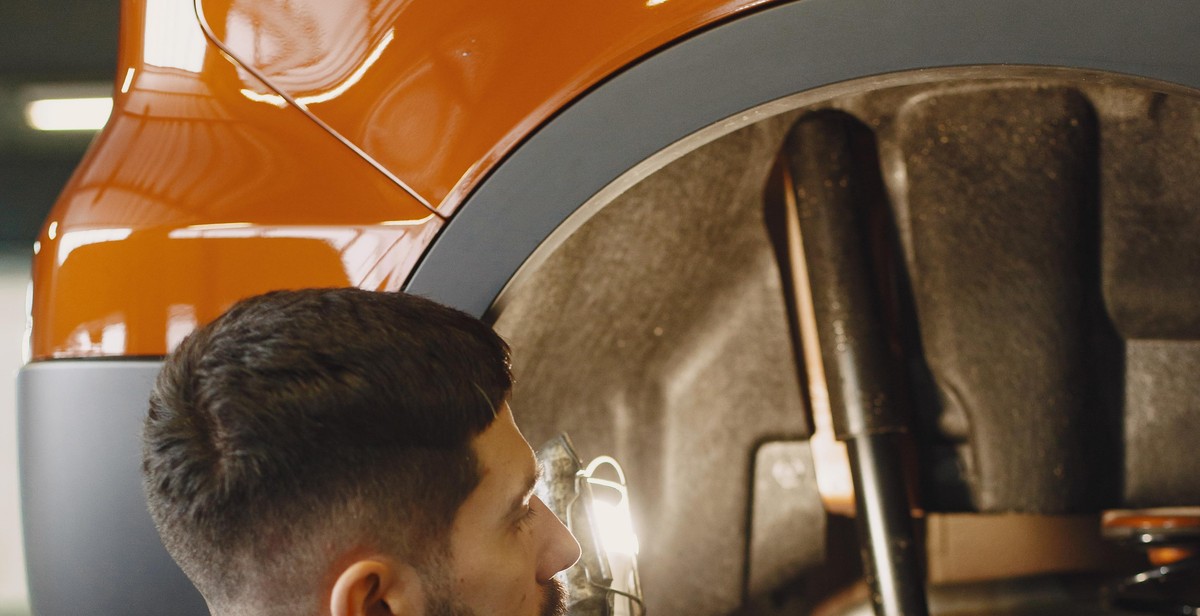Introduction: Why Perform Basic Car Maintenance?
Car maintenance is an essential aspect of owning a vehicle. It not only ensures that your car is running smoothly but also helps to extend its lifespan. Regular maintenance can save you a lot of money in the long run by preventing major repairs and breakdowns.
Basic car maintenance is easy to perform and requires minimal tools and knowledge. Even if you are not a car enthusiast, performing basic maintenance tasks can be a great way to save money and avoid costly repairs. Simple tasks like changing the oil, checking the brakes, and maintaining the tires can go a long way in keeping your car in top shape.
In this article, we will discuss some basic car maintenance tasks that you can perform on your own. We will cover topics like checking and changing the oil, maintaining the tires, inspecting the brakes, and more. By following these simple steps, you can save money on costly repairs and keep your car running smoothly for years to come.

Oil Change
Regular oil changes are essential to keep your car running smoothly and to prolong its lifespan. How often you should change your oil depends on the make and model of your car, as well as your driving habits. As a general rule, it is recommended to change your oil every 5,000 to 7,500 miles. However, some manufacturers suggest changing your oil every 10,000 miles or once a year if you don’t drive much. Check your owner’s manual for the recommended oil change interval for your car.
Tools You Will Need
Before you get started, make sure you have the following tools:
- Oil filter wrench
- Oil drain pan
- Funnel
- New oil filter
- New oil
- Ratchet and socket set
Step-by-Step Guide to Changing Your Oil
Follow these steps to change your oil:
- Make sure your car is parked on a level surface and the engine is cool.
- Locate the oil filter and oil drain plug under your car. Refer to your owner’s manual if you’re not sure where they are.
- Position the oil drain pan under the oil drain plug.
- Use the oil filter wrench to remove the oil filter. Be careful not to spill any oil.
- Use the ratchet and socket set to remove the oil drain plug and drain the oil into the pan.
- Replace the oil drain plug and install the new oil filter. Use the oil filter wrench to tighten it until it’s snug.
- Using the funnel, pour in the new oil. Check the owner’s manual for the recommended type and amount of oil.
- Start the engine and let it run for a few minutes to circulate the new oil.
- Check the oil level and add more if necessary.
- Dispose of the old oil and oil filter properly.
| Tip: | Keep a record of when you changed your oil and how many miles you’ve driven since. This will help you keep track of when your next oil change is due. |
|---|

Air Filter Replacement
If you want to keep your car running smoothly and efficiently, replacing the air filter regularly is a must. The air filter is an essential part of your car’s engine, as it prevents dirt, dust, and other debris from entering the engine and causing damage. Over time, the air filter becomes clogged with dirt and debris, which can cause your engine to work harder and reduce its performance. Replacing the air filter is a simple and affordable way to keep your car running smoothly and save money on repairs in the long run.
Why Replace Your Air Filter?
Replacing your air filter is important for several reasons:
- Improved engine performance
- Better fuel economy
- Reduced emissions
- Extended engine life
By replacing your air filter regularly, you can keep your engine running smoothly, improve your car’s fuel economy, and reduce harmful emissions. Additionally, a clean air filter can help extend the life of your engine, saving you money on repairs and replacements in the long run.
Tools You Will Need
Replacing your air filter is a simple task that requires only a few basic tools:
- New air filter
- Screwdriver (flathead or Phillips, depending on your car’s make and model)
- Rag or shop towel
Step-by-Step Guide to Replacing Your Air Filter
Follow these simple steps to replace your air filter:
- Locate the air filter housing. This is usually a black plastic box located near the front of the engine.
- Open the air filter housing by removing the clips or screws that hold it in place.
- Remove the old air filter and clean out any debris that may have accumulated in the housing.
- Insert the new air filter into the housing, making sure it is properly aligned and seated.
- Close the air filter housing and secure it with the clips or screws.
- Start your car and check to make sure the air filter is properly installed and there are no leaks or loose connections.
Replacing your air filter is a simple and affordable way to keep your car running smoothly and save money on repairs in the long run. By following these simple steps, you can replace your air filter in just a few minutes and enjoy the benefits of improved engine performance, better fuel economy, and reduced emissions.

Tire Maintenance
Maintaining your car tires is an essential part of keeping your vehicle running safely and efficiently. Proper tire maintenance can help extend the life of your tires, improve gas mileage, and prevent accidents on the road. In this section, we will discuss why tire maintenance is important, the tools you will need, and provide step-by-step guides for checking your tire pressure and rotating your tires.
Why Maintain Your Tires?
Your car’s tires are the only point of contact between your vehicle and the road. As such, they play a critical role in your car’s performance, safety, and fuel efficiency. Regular tire maintenance can help prevent tire blowouts, improve handling and traction, and extend the life of your tires. Additionally, properly inflated tires can improve your gas mileage, saving you money in the long run.
Tools You Will Need
Checking and maintaining your tires requires a few basic tools. You will need a tire pressure gauge, a tire tread depth gauge, a jack, and a lug wrench. You may also need a tire repair kit if you notice any punctures or damage to your tires.
Step-by-Step Guide to Checking Your Tire Pressure
- First, make sure your tires are cool. Tires that have been driven on will have higher pressure, giving you an inaccurate reading.
- Remove the valve cap and press the tire pressure gauge onto the valve stem.
- Read the pressure gauge and compare it to the recommended pressure listed in your car’s owner’s manual or on the driver’s side door jamb.
- If the pressure is too low, use an air compressor to fill the tire to the recommended pressure. If the pressure is too high, release some air by pressing the center pin in the valve stem with the gauge or a small tool.
- Repeat this process for all four tires.
Step-by-Step Guide to Rotating Your Tires
Rotating your tires regularly can help ensure even wear and extend their lifespan. Here’s how to do it:
- First, consult your car’s owner’s manual for the recommended rotation pattern.
- Use a jack to lift one corner of the car and support it with a jack stand.
- Remove the wheel and tire and replace it with the spare tire.
- Repeat this process for all four tires, following the recommended rotation pattern.
- Once you have rotated all four tires, use a torque wrench to tighten the lug nuts to the manufacturer’s specifications.
By following these steps, you can maintain your tires and keep your car running safely and efficiently.

Brake Maintenance
Regular brake maintenance is essential for the safety of you and your passengers. It’s important to keep your brakes in good condition to prevent accidents and costly repairs. Here’s a step-by-step guide to checking and changing your brake pads.
Why Maintain Your Brakes?
Brake pads are designed to wear down over time, so it’s important to check them regularly. Worn brake pads can cause your car to take longer to stop, which can be dangerous. If you hear a grinding noise when you apply the brakes, it’s a sign that your brake pads need to be replaced immediately.
Tools You Will Need
Before you start, make sure you have the following tools:
- Jack and jack stands
- Lug wrench
- C-clamp
- New brake pads
- Brake cleaner
Step-by-Step Guide to Checking Your Brake Pads
- Park your car on a level surface and engage the parking brake.
- Remove the wheel using the lug wrench.
- Inspect the brake pads for wear. If they are less than 1/4 inch thick, they need to be replaced.
- If the brake pads look worn, check the rotor for damage. If the rotor is damaged, it will need to be replaced.
- Clean the brake caliper and rotor with brake cleaner.
- Replace the brake pads if necessary.
- Put the wheel back on and tighten the lug nuts.
Step-by-Step Guide to Changing Your Brake Pads
- Park your car on a level surface and engage the parking brake.
- Remove the wheel using the lug wrench.
- Remove the brake caliper by removing the bolts that hold it in place.
- Use a C-clamp to compress the caliper piston.
- Remove the old brake pads.
- Install the new brake pads.
- Replace the brake caliper and bolts.
- Put the wheel back on and tighten the lug nuts.
| Warning: | Brake maintenance can be dangerous. If you are unsure about how to perform these tasks, seek professional help. Always follow the manufacturer’s instructions and use caution when working on your brakes. |
|---|

Conclusion
Performing basic car maintenance is essential for the longevity and reliability of your vehicle. It can also save you a significant amount of money in the long run by preventing costly repairs and improving fuel efficiency.
Benefits of Performing Basic Car Maintenance
- Prevents costly repairs
- Improves fuel efficiency
- Increases the lifespan of your vehicle
- Enhances safety on the road
- Boosts the resale value of your car
By following the tips outlined in this article, you can perform basic car maintenance tasks such as checking the oil, replacing the air filter, and inspecting the tires. These tasks are easy to do and can be completed with minimal tools and knowledge.
Remember that regular maintenance is key to keeping your car running smoothly and avoiding breakdowns. By taking care of your vehicle, you can save yourself time and money while ensuring your safety on the road.
So, what are you waiting for? Start performing basic car maintenance today and enjoy the benefits of a well-maintained vehicle!
| Benefits | Tasks to Perform |
|---|---|
| Prevents costly repairs | Check oil, inspect brakes, replace air filter, check tire pressure |
| Improves fuel efficiency | Check tire pressure, replace air filter, perform regular oil changes |
| Increases the lifespan of your vehicle | Perform regular oil changes, check and replace fluids as needed, inspect brakes and tires |
| Enhances safety on the road | Inspect brakes and tires, replace windshield wipers, check headlights and taillights |
| Boosts the resale value of your car | Perform regular maintenance, keep records of all repairs and services |
